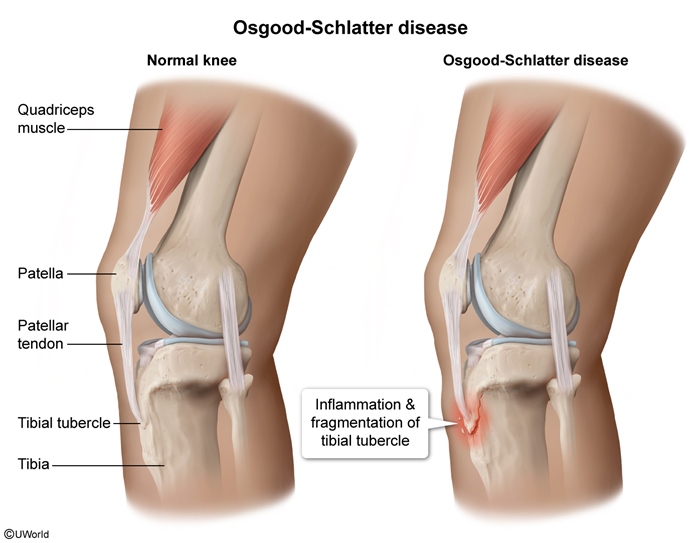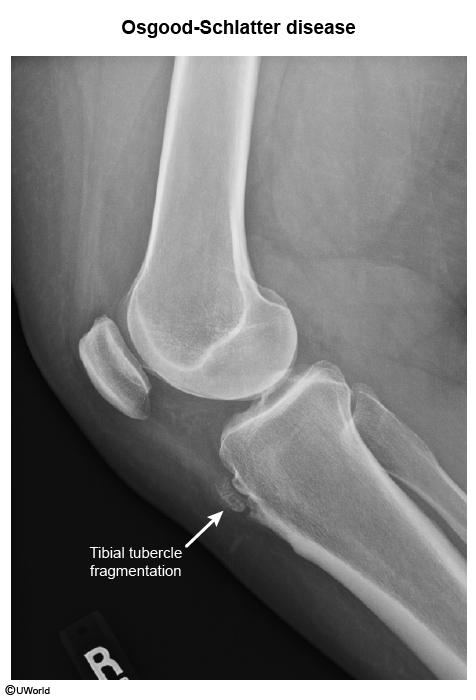Osgood-Schlatter Disease
Article Sections
Introduction
Osgood-Schlatter disease (OSD), also known as tibial tubercle apophysitis, is an overuse injury that causes knee pain in physically active adolescents who have recently undergone a growth spurt.
Pathophysiology and risk factors
OSD arises from chronic, repetitive stress on the developing tibial tubercle, causing chronic avulsion at the apophysis (secondary ossification center) (Figure 1). Risk factors associated with this condition are those that create an opportunity for the apophysis at the tibial tubercle to be avulsed and include:
- Young adolescence (typically age 10-14) and growth spurts: During this time, the bones lengthen at a faster rate than muscles or tendons, leading to greater tension at the tendon attachment points. In addition, compared to the fully ossified tibial tubercle in adults, the developing tibial tubercle is cartilaginous in nature, making it more prone to injury.
Continue Learning with UWorld
Get the full Osgood-Schlatter Disease article plus rich visuals, real-world cases, and in-depth insights from medical experts, all available through the UWorld Medical Library.
Figures

Figure 1
Images

Image 1